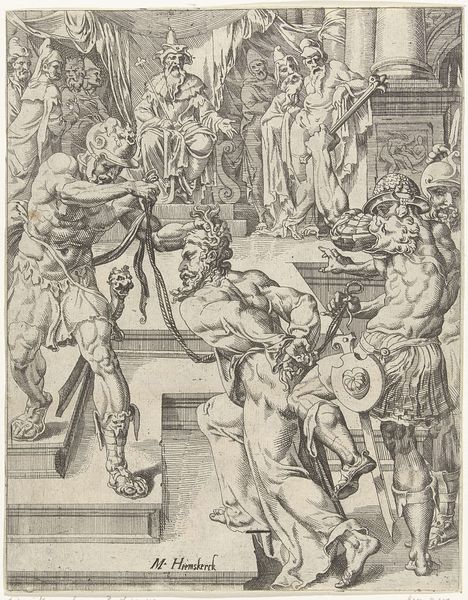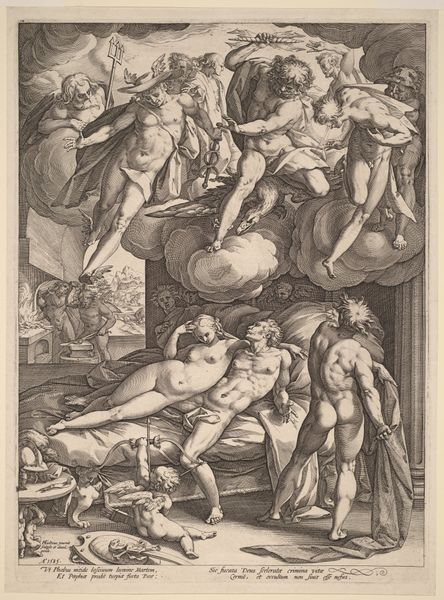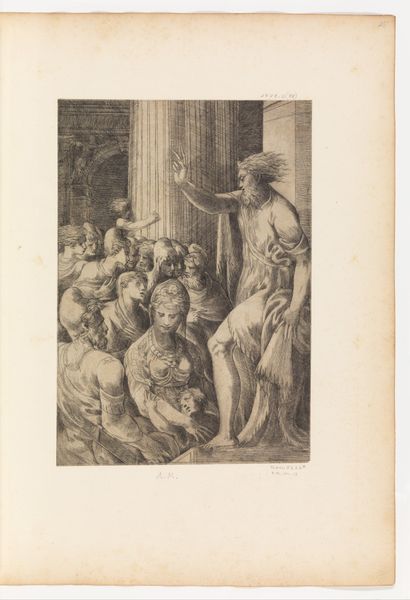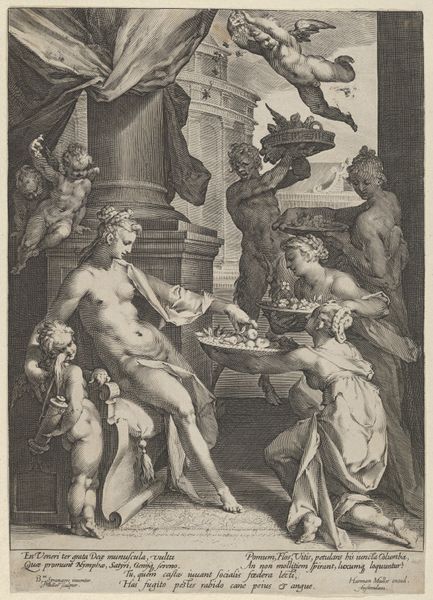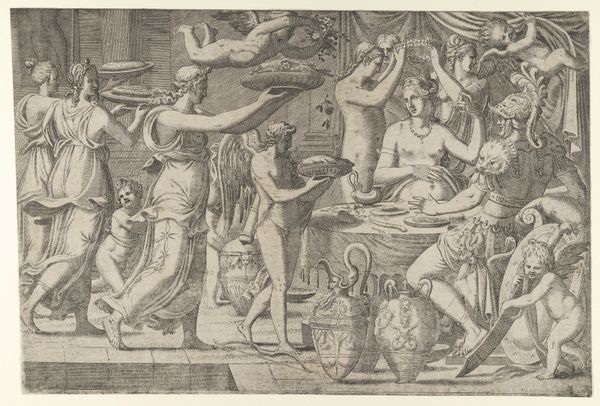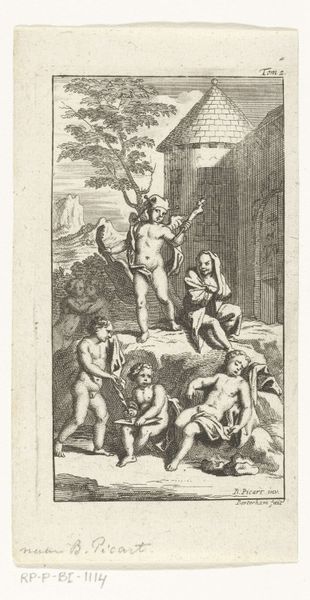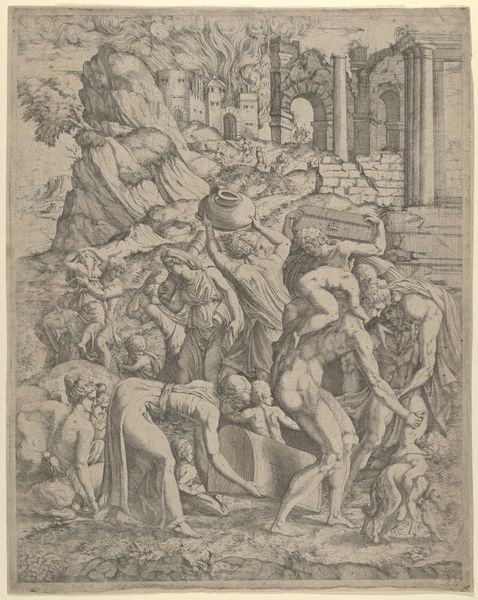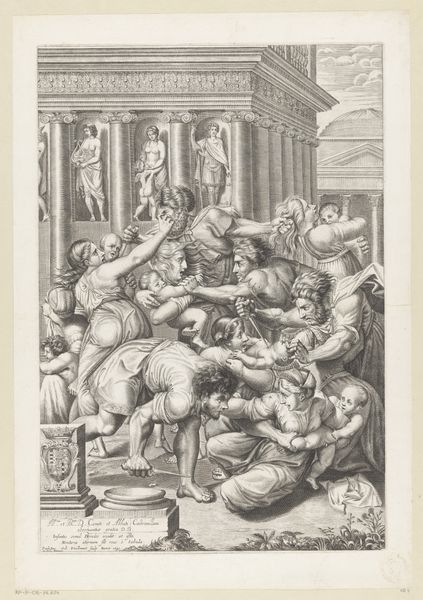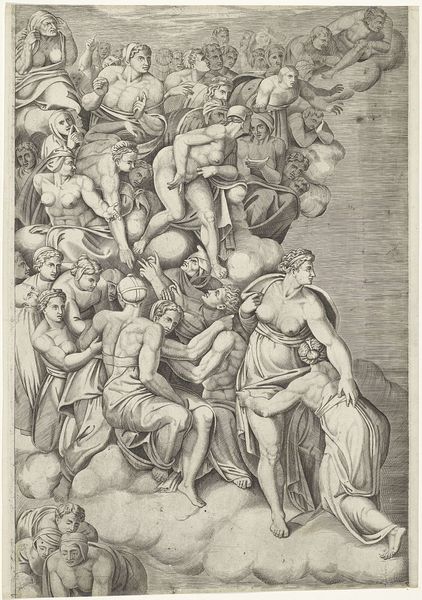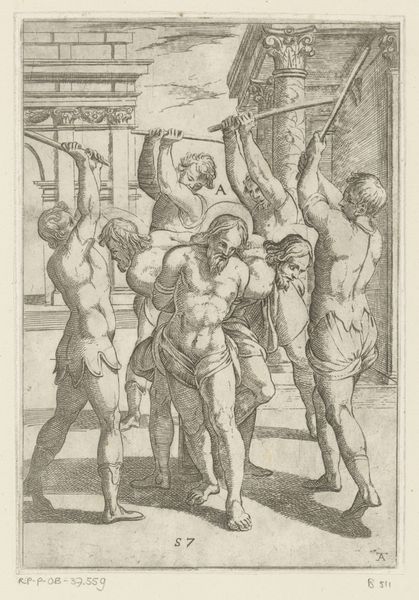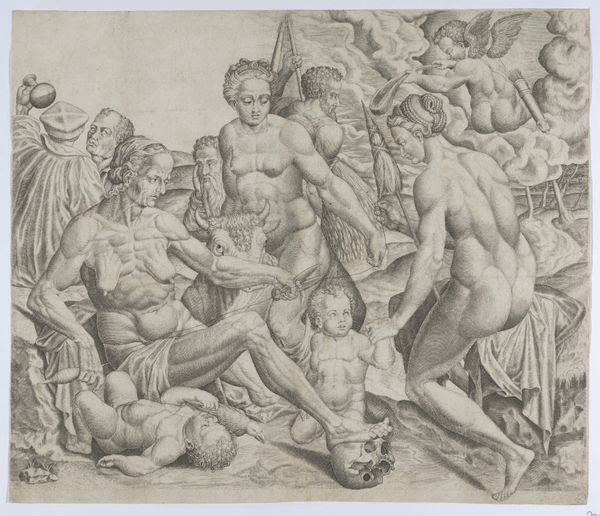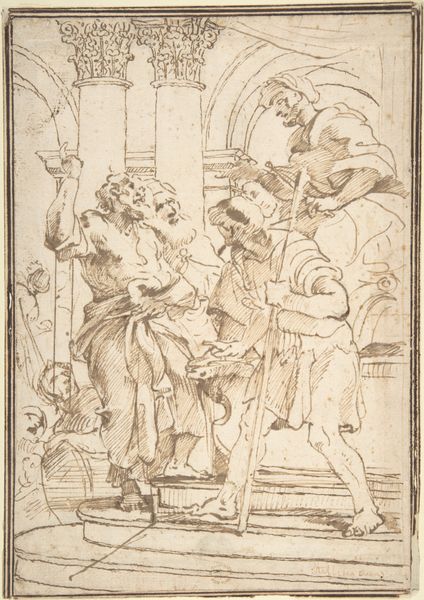
print, etching, engraving
#
allegory
# print
#
etching
#
figuration
#
history-painting
#
italian-renaissance
#
engraving
Dimensions: height 295 mm, width 253 mm
Copyright: Rijks Museum: Open Domain
Curator: This engraving is titled *Bruiloft van Amor en Psyche,* or the *Wedding of Cupid and Psyche*, dating back to sometime between 1530 and 1560, created by the Master of the Die. It's currently held at the Rijksmuseum. Editor: It's quite striking. All of these figures packed into one scene, like a theatrical stage, and their expressions are intense. How do you interpret this work in the context of its time? Curator: Think about what marriage meant during the Italian Renaissance. Beyond personal affection, it was a deeply political and economic institution. Consider Psyche, a mortal, marrying Cupid, a god. What anxieties or aspirations about social mobility, or even the blurring of social lines, might this narrative reflect? And how does that relate to the visual language here? Editor: I see what you mean. There’s almost a tension between the idealized, classical bodies and the everyday setting of a wedding feast. It makes me wonder if it's a comment on social expectations or perhaps an early form of social commentary. Curator: Exactly! Consider also the print medium. Who had access to this imagery? Was it a means of disseminating certain ideologies or even critiquing them among specific social strata? Look at the gestures; who is included, who is excluded? Who seems to be in charge? Editor: I see how you are using questions about art to explore bigger cultural narratives about power and status. That's really fascinating! Curator: Art always has something to say, but the questions we ask it change over time, revealing the ongoing dialogues shaping and re-shaping cultures. Editor: It’s exciting to realize that this old print is really a gateway into talking about themes relevant today such as social equity, privilege, and status. Thank you.
Comments
No comments
Be the first to comment and join the conversation on the ultimate creative platform.
